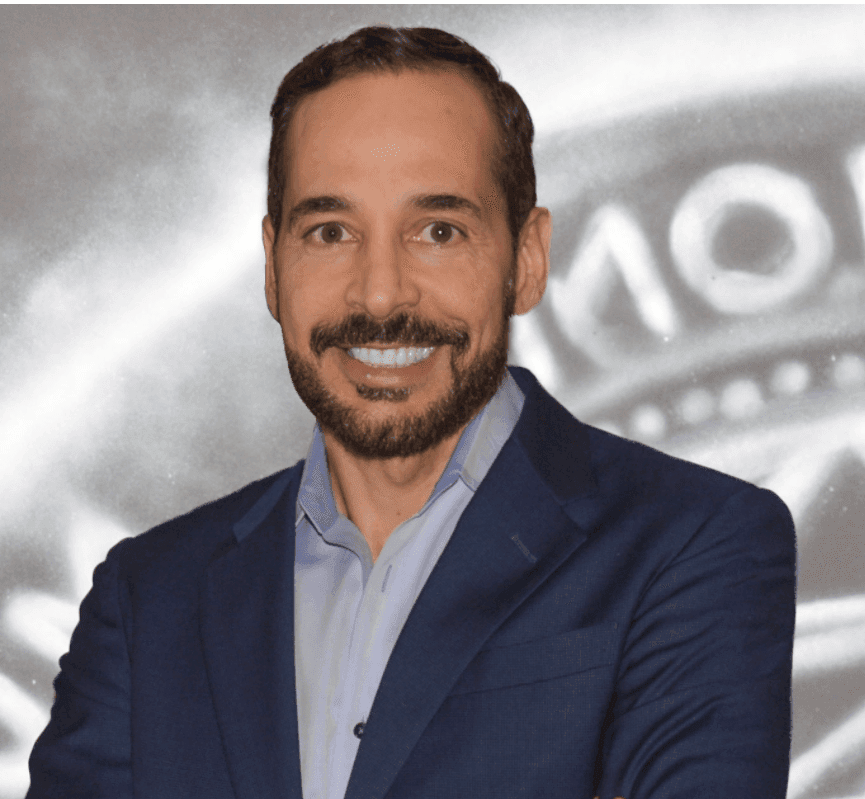The 10 Rules Of Personal Branding 3.0

Vector image is from freepik.com by @storyset.
Personal branding 1.0—what Tom Peters outlined in his manifesto, “The Brand Called YOU,”— was mostly focused on your real-world brand. That’s because personal branding became a thing 25 years ago, right before the internet really took off.
When all things internet were at warp speed, and social media (LinkedIn in particular) became a primary form of communication, we ushered in the second wave of personal branding where everything went virtual—including you. This move to all things virtual was later accelerated by the Covid pandemic. Mastering your online first impression and using video and social media to stay engaged with your people became a crucial part of your job.
Well, hang onto your seat because we just entered Personal Branding 3.0 at the speed of a Formula 1 race car. One thing that’s even more true in Personal Branding 3.0 is that you are the CEO of Brand YOU, and it’s time assume the title. Personal Branding 3.0 means mastering the core elements of both personal branding 1.0 and 2.0 (the real and the virtual) while adopting some new skills and mindsets as you seek to expand your success and increase your happiness in the hybrid, tech-infused world of work. Here’s what successful branding looks like in the age of Personal Branding 3.0, with the eight rules you need to follow:
1. Be emotional. It’s good for business.
In the hybrid world of work where the people you work with could be anywhere, the human elements of business take top billing. Compassion. Empathy. Communication. Acknowledgment. Inclusion. Praise. Caring. They all take on more importance because the WFA paradigm runs the risk of taking the human out of human resources. Add to that the infusion of technology and you understand how important humanity becomes to your personal brand and your success. In this world where you won’t see those whom you seek to impact every day, you need to be deliberate about maintaining relationships. And those relationships are not built on credentials, facts or logic. They are built upon human connection and emotion.
2. Maximise in-person activities.
Even if you are in the “WFH all the time” camp, there’ll be opportunities to connect with colleagues, clients and networking contacts—including learning events, kick-offs, trade shows and conferences. These real world events require more attention than in the past. They present opportunities to connect with others on a deeper, more human level than you can from your computer screen. Be social when you are in the office. Overtly connect with people you know and reach out to those who don’t make it onto your calendar. Go out of your way to engage in person as much as you can. Spend nearly 100% of your time engaging with others during these valuable in-person moments. Eat your meals with colleagues or, better yet, with people you don’t know who work in other divisions of your company. Pen time into your calendar called “human connection” and use it to bolster relationships and build new connections. Save the other items on your do-list for times when you don’t have the opportunity to engage with others.
3. Become a video star.
You’re probably familiar with the saying a picture is worth a thousand words. But in the new world of work, it’s moving pictures that are important. According to Forrester Research's Dr. James McQuivey, one minute of video is worth 1.8 million words. In our new Work From Anywhere paradigm, the only communication option that’s better than video is being there in person—and that’s not always possible. Those who master video will master Personal Branding 3.0. And that means synchronous and asynchronous video. Virtual meetings were not a blip; they’re here to stay. You had two years of back-to-back Zoom meetings, so there’s no excuse for not showing up powerfully and professionally on camera. And for pre-recorded messages, it’s never been easier to maximize your brand thanks to easy, quality video editing technology.
4. Live your hashtags.
Personal branding means owning your turf—your area of expertise plus your point of view. And as more and more people have jumped on the “brand wagon,” the need for you to hone your message and clearly and consistently express it has become more important. It’s critical to clearly communicate who you are and let people what you want to be known for. That means defining your area of thought-leadership and being clear about your specific take on your area of expertise. Know what your hashtags are and live them (because there are many others in your space).
5. Become a digital brand ambassador.
You are your company’s CMO. That’s right, even if you work in accounts payable or supply chain management, you have a role to play in the company brand. That’s because you are a key element of an effective communication strategy for your company. And when you take that role seriously, three great things happen: 1. You demonstrate your loyalty to your company. 2. You get out of your silo and understand what’s happening in other parts of the organization. And 3. You get ready-made content that can make you visible to the people you seek to influence and impact. You’re an important part of the company brand. Take that job seriously.
Read more: Be You. Be True. Make Your Personal Brand Shine Amidst Adversity
6. Mesmerise in meetings.
Meetings have always been one of the best ways to be visible to your target audience, showcase your brilliance and demonstrate the unique value you offer. In personal branding 1.0, meetings in the conference room were the most powerful way to demonstrate what makes you great, so you could influence and impact key stakeholders. In personal branding 2.0, you needed to master meeting management in the Zoom room. Today, with a distributed workforce, you need to develop a new skill to be adept at managing a more complex meeting environment that’s both in person and virtual. You need to learn to magnetise, mesmerise and remain memorable in hybrid meetings. But hybrid meetings are not just a mashup of in-person meetings and Zoom meetings. Mastering hybrid means understanding the new paradigm and making sure all participants (regardless of where they are located) are engaged, heard and acknowledged. It’s often those at home who are forgotten; out of site can truly be out of mind. The key word is inclusion: resist the temptation to perform only for the local audience. Prioritise virtual over real, and master both of them to make your mark in meetings.
Discover: How To Build Your Personal Brand By Exhibiting The Crucial Three C's of Branding
7. Activate your inner robot.
I know, everything I have shared up to now has had a common thread—being human. Isn’t embracing tech a contradiction? Not really. Today, every strong brand is tech savvy. Being tech savvy and integrating tech into what you do and how you do it gives you several advantages. First, it allows you to automate, delegate and eliminate work that can be done without your intervention (freeing you up to do more human-related activities.) Second, it highlights your brand attribute of innovative—and that makes people pay attention. Tech is vast. You need not become an expert in AI and Robotics, Virtual Reality and data analysis. You need only identify how tech can better help you achieve your goals and purpose and learn how to put tech to work for you. Tech is not a threat; it’s a treat, so infuse tech into your daily work.
8. Flexibility is not just for gymnasts.
In the hybrid world of work, take some inspiration from Simone Biles. I’m talking about flexibility. You need to be skilled at both real and virtual interactions and able to move seamlessly back and forth between the two, equally competent in your floor exercises and the balance beam.
9. Be a lifelong learner.
The shelf life for skills is decreasing. The need to actively seek learning opportunities is an essential part of branding because being relevant is the foundation on which strong brands are built. If you’ve been avoiding social media, take a course in it. And be proactive. Don’t wait for your company to offer you the learning you need to amp up your value and achieve your goals. Define your goals, identify the development opportunities necessary to reach them, and then pursue them, even if it means sourcing and paying for them yourself. The pace of change is increasing, and the only way to keep pace is to make learning your mantra and your daily habit.
10. Seek and give feedback.
One of the things we took for granted in the all-real world was regular, mini, impromptu feedback moments. Like when someone who was in the meeting you just led pops their head into your office to say, “Nice job in the meeting. You always make sure we get every agenda item covered.” Or when your manager looks at you with approval when you make a particularly salient point. Then all eyes fully focused on you when you contributed, with heads nodding in agreement. Without these built-in opportunities for feedback, you need to deliberately create them. Your brand is held in the hearts and minds of those who know you, so seeking feedback is essential for effective branding. And providing feedback is your responsibility. It’s a gift to others that helps them learn, grow, and feel validated.
Master Personal Branding 3.0 so you can grow your brand and amp up your career success, enjoying the true fulfilment you should be getting from work.
Take a look at this rating of the best brand identity agencies if you want to learn more about branding.
This article was originally published in Forbes.
Leaderonomics.com is an advertisement free website. Your continuous support and trust in us allows us to curate, deliver and upkeep the maintenance of our website. When you support us, you allow millions to continue reading for free on our website. Will you give today? Click here to support us.
Personal
Tags: Marketing, Brand
William Arruda is the bestselling author of the definitive books on personal branding: Digital YOU, Career Distinction and Ditch. Dare. Do! And he’s the creative energy behind Reach Personal Branding and CareerBlast.TV – two groundbreaking organizations committed to expanding the visibility, availability, and value of personal branding across the globe. For more information on Personal Branding , please visit williamarruda.com.





